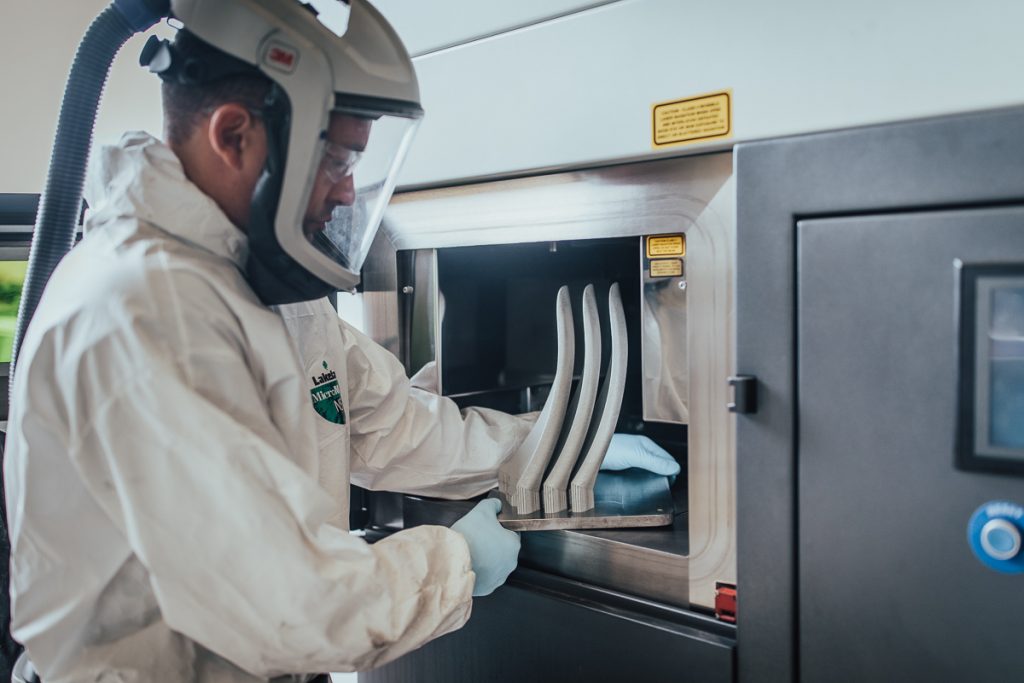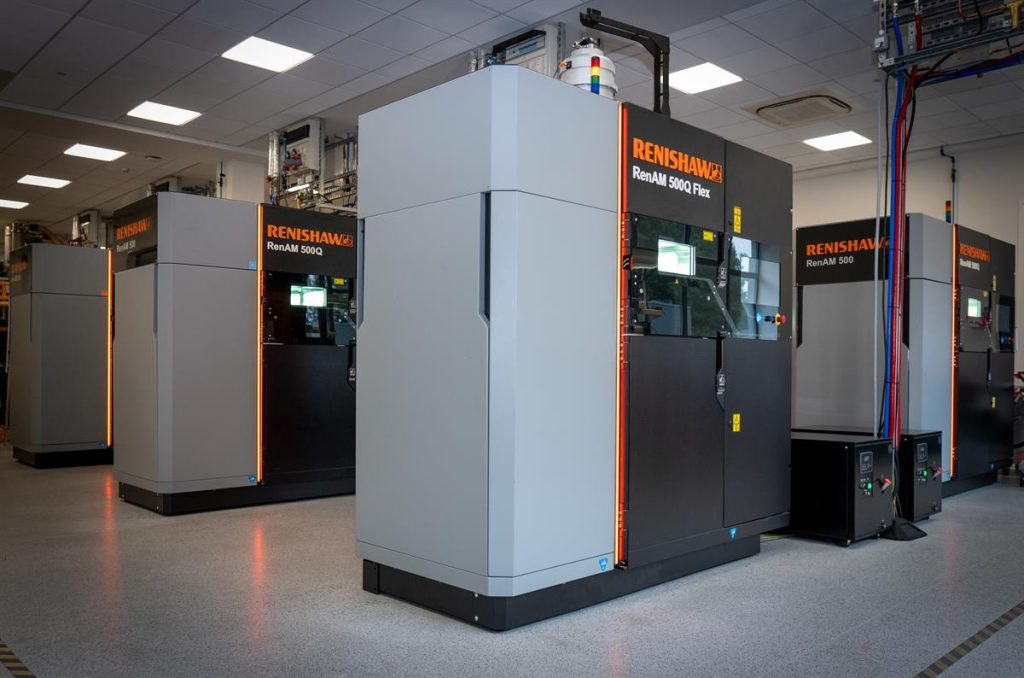Insiders and analysts have made their predictions on the 3D printing trends to watch out for. Find out more in our series focused on the future of 3D printing.
UK-based engineering firm Renishaw (RSW) has revealed that the revenue generated by its Manufacturing Technologies division rose by 30% during the second half of 2021.
Renishaw’s H1 2022 financials, which it reports from June 30 2021 to December 31 2021, show that its manufacturing arm brought in £309 million, 30% more than the £237 million it reported in H1 2021. Over the period, the division benefited from an impressive recovery in demand from its semiconductor and electronics clientele, while its 3D printing sales also saw strong ‘repeat business’ from ‘key accounts.’
In anticipation of the company’s results, investors drove its share price up by 15% in the lead up to their publication, and having met expectations with its financial performance, it now projects that its FY 2022 pre-tax profit could rise to £181 million.
“There was growth for all product lines within our Manufacturing Technologies segment, most notably for the encoder and gauging lines,” explained Sir David McMurtry, Executive Chairman of Renishaw. “The strong demand for our encoder product lines continues to be driven by increased investments in industrial automation and the semiconductor and electronics capital equipment markets.”

Renishaw’s H1 2022 financials
While Renishaw used to report its revenue across Metrology and Healthcare segments, it now does so in the form of ‘Manufacturing Technologies’ and ‘Analytical Instruments and Healthcare’ divisions, making it difficult to compare its H1 2022 figures against those it achieved in the periods prior to this reorganization.
What we do know is that the former, which includes the firm’s industrial metrology, precision measurement and 3D printing offerings, was the driving force behind its H1 2022 revenue growth. During the period, Renishaw says that a spike in demand for consumer electronics and EVs led to increased interest in its gauging, magnetic and optical encoder product lines, with its measuring offering also seeing growth.
As a result, the company’s Manufacturing Technologies division was able to achieve an adjusted operating profit of £81 million over the course of H1 2022, a 98% increase on the £41 million it reported in H1 2021. Although Renishaw’s financials make little reference to how its 3D printing business helped contribute to this, its Chief Executive William Lee did tell analysts on its earnings call, that its wider strategy of targeting key repeat customers is currently “working well” in this area.
Revenue generated by the firm’s Analytical Instruments and Healthcare segment, on the other hand, fell from £18.3 million to £16.5 million between H1 2021 and H1 2022, due mainly to delays in shipping its spectroscopy lines to China.
Despite this though, the company was still able to bring in an overall revenue of £325 million in H1 2022, 27% more than the £255 million it reported during H1 2021, and as a result, it has not only been able to increase its cash balance from £215 million to £222 million during this period, but offer a shareholders a 16p per share interim dividend.
| Renishaw Earnings (£) | H1 2021 | H1 2022 | Difference (%) |
| Manufacturing Technologies | 237m | 309m | +30 |
| Analytical Instruments and Healthcare | 18.3m | 16.5m | -10 |
| Total Revenue | 255m | 325m | +27 |
Renishaw’s profitable H1 2022
During Renishaw’s H1 2022 earnings call, Lee stressed that its ambition in the 3D printing space is still to be “the best hardware supplier” to its clientele. To achieve this, Lee said the firm is actively working with customers in the early stages of adopting the technology, “making initial parts” and sometimes even ‘hosting’ machines for them, until they’re ready to install them at their own facilities.
In terms of new clients, the company revealed that one of its 3D printers had been deployed by Optimus3D during the quarter, to manufacture optimized titanium chainstay brackets for Angel Cycle Works’ bicycles. Using a RenAM 500S system, the company is said to have been able to automate the part’s production process, while achieving a “high level of consistency” and “improved quantities.”
Renishaw also introduced its new RenAM 500 Flex 3D printers at Formnext in H1 2022, complete with simplified powder handling systems, designed to enable users to more easily change materials. Although the machines were launched too late into the period to have had a meaningful impact on the company’s financials, their sales performance is likely to be vital to its 3D printing division’s future success.
More broadly, when it comes to the reasons behind its impressive H1 revenue figures, it’s worth noting how Renishaw moved to insulate its business from the impact of Brexit as well. In February 2021, the firm opted to expand its facilities and stock levels at its EU offices, while making some of them independent subsidiaries, enabling it to avoid some of the supply chain disruption seen elsewhere in the UK.

3D printing ready for “take-off?”
Renishaw has made some bold predictions ahead of H2, forecasting revenue for the 2022 financial year of £650-690 million, and a pre-tax profit of £157-181 million. If realized, these figures would represent annual rises of 22% and 4% respectively.
In a statement issued issued alongside its figures, the firm said that it remains “confident in its long-term prospects” due to its strong financial position, product pipeline and “high-value manufacturing relevance,” while McMurtry added on its earnings call, that 3D printing remains an important part of achieving its goals moving forwards, particularly in the world of “small-batch” production.
“The future is the price per part and when it comes down, the potential for additive manufacturing is enormous,” added McMurtry. “There’s no tool that needs to be sharpened. There are a lot of advantages, and when the price per part comes down really rapidly, it will really take off in the future, in my view.”
To stay up to date with the latest 3D printing news, don’t forget to subscribe to the 3D Printing Industry newsletter or follow us on Twitter or liking our page on Facebook.
For a deeper dive into additive manufacturing, you can now subscribe to our Youtube channel, featuring discussion, debriefs, and shots of 3D printing in-action.
Are you looking for a job in the additive manufacturing industry? Visit 3D Printing Jobs for a selection of roles in the industry.
Featured image shows a row of Renishaw’s new 500Q Flex 3D printers. Photo via Renishaw.


